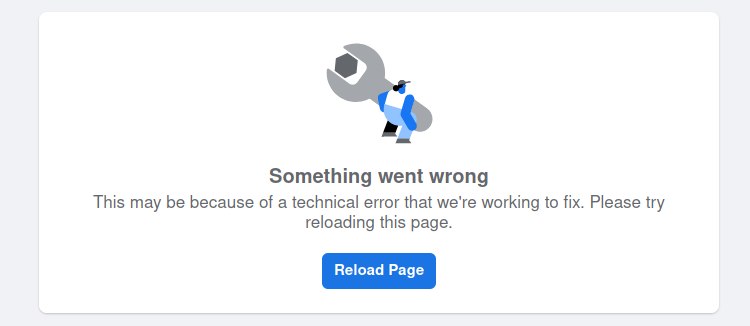How I limit social media?
A few years ago, when I was doom-scrolling on Twitter, I decided that I was done. I closed the tab. My first reflex then was to open a new tab and go on Twitter. This day, I realized that I was addicted to social media. It was time to act and change my way of consuming those.
I thought I would share in this post the way I use social media today to avoid falling into addiction.
Add but unfollow
At the time, I just wanted to use the chat functionality of Facebook to stay in touch with friends. My way of avoiding the news feed was that every time I added someone, I unfollowed them directly. This meant that I had a fun message on my homepage.

Spoiler: reloading the page didn’t fix it. This bug stayed for years until they introduced forced “suggested posts” to the timeline. Fortunately, by this time, I wasn’t really using Facebook anymore.
Private or incognito window method
After realizing my addiction, I logged out of every social media site in my browser and deleted the applications on my phone. But I didn’t want to lose some relationships that I had through those. So I opted for the “private or incognito window method” (name in progress).
This is basically a way to go on social media only from a private or incognito window. This means that every time I want to post or scroll, I have to open a private or incognito window, open my password manager, type my password to login, copy the username and password to the social media. I do this on my desktop and my mobile. Every time I close the private or incognito browser, I lose my logged-in session. I have to do the login flow again if I want to scroll or post.
Adding this layer of complexity made my brain really lazy to do those steps, which really rapidly stopped my addiction.
Android Virtual Machines

I actually love sharing my photography work on Instagram. Instagram lets you post photos but not share them as stories in a browser. So I opted to use BlueStacks, a service to run Android on Windows and Mac. It lets me create an Android virtual machine for one application directly on my desktop super easily. I installed the Instagram virtual machine and only use it to share my posts as stories.
Last words
All this setup might be a bit overengineered, but as someone who gets easily distracted and can fall easily into addictions, it worked wonders. Now all my social media sessions are actually meaningful, and I find myself logging in to those once a week, if not less.
I also felt much more positive and happy, since I had less visibility over the algorithms that shared bad news mixed with good news. I felt less confused by the constant change of context.
The last thing that it brought was also the fact that, as someone who stays in touch with friends, I feel more connected to them because I feel genuine curiosity about their lives by asking them directly instead of seeing them online without their knowing.
That’s all. I hope this post helps you think about your relationship with social media. Please let me know if you feel that way as well.
About me
I am Thomas (toto) Bille, a software engineer who works as an Engineering manager at Studocu and previously at Canonical, the publisher of Ubuntu. I am passionate about tech, photography and coffee. Make yourself comfy and welcome to my site!